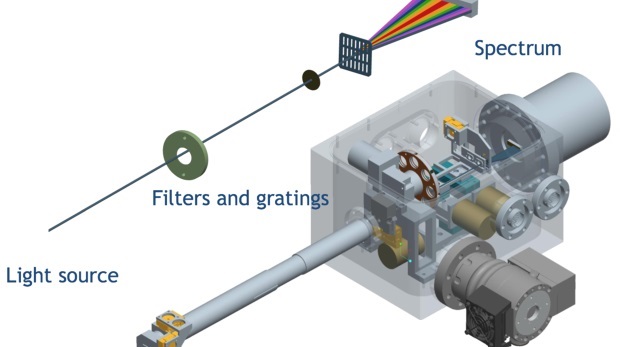10 December 2015
Extreme UV light sources are currently of interest for a number of high tech applications, including EUV photolithography. Years ago a worldwide benchmark on such light sources was done, using a briefcase-sized portable EUV detector. This action, nicknamed Flying Circus due to its mobile nature, was very successful, as it allowed a true comparison of the performance of the different EUV light sources under development all over the world. It managed to set a measurement standard that is maintained up to present. Currently, many detectors used by the different source manufacturers still work on this detector principle: a filtered detector and a monochromator in the form of an EUV reflecting mirror.
Yet, no information could be collected on possible parasitic light outside the target EUV band, while such light introduces hazardous effects in the chip manufacturing process. Therefore, the Flying Circus concept was recently expanded by a broadband detection configuration, including a high resolution grating element. Several demonstrations could already be given, and on 8 December 2015 a valorisation panel of the Dutch NanoNext board has awarded the Flying Circus team with a development grant to produce a compact industrial variant. The team, led by Dr Muharrem Bayraktar of the XUV group at MESA+, is now going to develop such a variant in conjunction with a number of industrial partners, aiming for setting again a new measurement standard.













